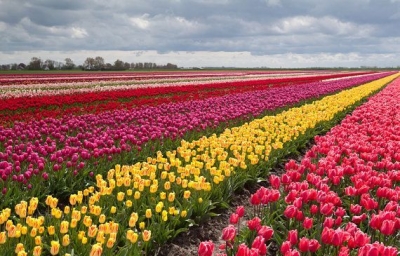Why is the Potala palace an amazing location to see?
 The Potala Palace is a religious and administrative complex in Lhasa, Tibet Autonomous Region. It is situated on the Red Mountain or Marpori, 130 metres above the Lhasa River Valley.
The Potala Palace is a religious and administrative complex in Lhasa, Tibet Autonomous Region. It is situated on the Red Mountain or Marpori, 130 metres above the Lhasa River Valley.Built in the 1600s, the palace was a brilliant construction with 13 stories containing more than 1000 rooms, 10,000 shrines, and about 200,000 statues. It is named after Mount Potalaka which was believed to be the abode of the bodhisattva Avalokitesvara.
According to historians, the complex was built in the mid-17th century by the fifth Dalai Lama, after being advised that the site was ideal as a seat of government. There are two main parts of the palace - the White Palace or Potrang Karpo and the Red Palace or Potrang Marpo. The former was the residence of the Dalai Lamas until 1959.
Potrang Marpo on the other hand is a major pilgrimage centre devoted to religious study and Buddhist prayer. With numerous halls, chapels, libraries, galleries, winding passages and tombs, it has a very complicated structure.
Today the Potala Palace is one of the most important pilgrimage centres in the country.
 The Maldives or the Republic of Maldives is an independent island nation that lies in the Indian Ocean. It is made up of 1200 coral islands and sandbanks. Male is the capital of the archipelago, and is the main urban centre. A quarter of the country’s population lives in this part.
The Maldives or the Republic of Maldives is an independent island nation that lies in the Indian Ocean. It is made up of 1200 coral islands and sandbanks. Male is the capital of the archipelago, and is the main urban centre. A quarter of the country’s population lives in this part. The Angkor Wat is a Cambodian temple complex that forms the largest religious monument in the world.
The Angkor Wat is a Cambodian temple complex that forms the largest religious monument in the world. The massive churches and cathedrals, prestigious museums and traditional windmills ore indeed trademarks of the Netherlands. But no discussion on the marvels of this place can be complete without tulips or Keukenhof or the bulb districts.
The massive churches and cathedrals, prestigious museums and traditional windmills ore indeed trademarks of the Netherlands. But no discussion on the marvels of this place can be complete without tulips or Keukenhof or the bulb districts.

 Athens is a historical city and the capital of Greece that is marked for its artistic and Intellectual heritage. There are many sights in and around the city that can leave a visitor spellbound. One of them is the Acropolis.
Athens is a historical city and the capital of Greece that is marked for its artistic and Intellectual heritage. There are many sights in and around the city that can leave a visitor spellbound. One of them is the Acropolis.